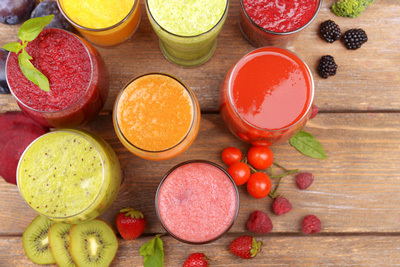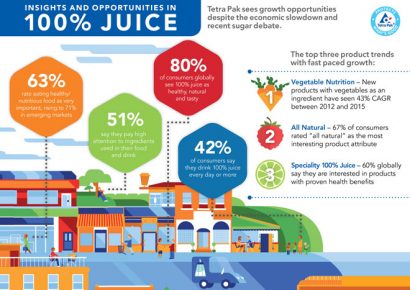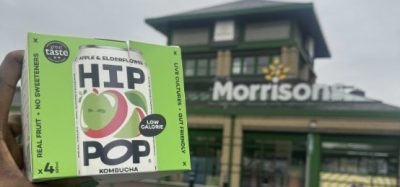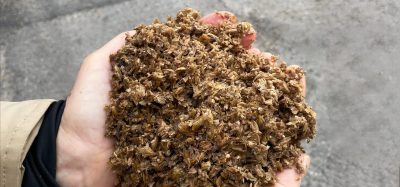Hard to beet: Tetra Pak talk us through the unstoppable 100% juice trend
- Like
- Digg
- Del
- Tumblr
- VKontakte
- Buffer
- Love This
- Odnoklassniki
- Meneame
- Blogger
- Amazon
- Yahoo Mail
- Gmail
- AOL
- Newsvine
- HackerNews
- Evernote
- MySpace
- Mail.ru
- Viadeo
- Line
- Comments
- Yummly
- SMS
- Viber
- Telegram
- Subscribe
- Skype
- Facebook Messenger
- Kakao
- LiveJournal
- Yammer
- Edgar
- Fintel
- Mix
- Instapaper
- Copy Link
Posted: 25 October 2016 | Roy Manuell | 1 comment
Exclusive with Tetra Pak about the latest juice trends, issues and how the industry might shift in light of the great sugar intake debate…


Following the publication of the Tetra Pak Juice Index 2016, we speak exclusively to Libby Costin, Vice President Marketing, Tetra Pak about the latest trends, issues and how the industry might shift in light of the great sugar intake debate…
Why do you believe that the potential for 100% will keep growing despite the recent polemic surrounding sugar-intake?
One of the most interesting insights from our recent Tetra Pak Index report, which focused on 100% juice for the first time, was that more than 80% of consumers globally see 100% juice as healthy, natural and tasty. It is encouraging that despite widespread awareness of the sugar debate, few consumers have negative perceptions of 100% juice. It is also important to note that none of the existing regulations which target beverages apply to 100% juice, and quite rightly, because it has no added sugar.
“More than 80% of consumers globally see 100% juice as healthy, natural and tasty…”
We know that health is a growing focus for consumers, and we recommend using clear and effective messaging to reinforce the health benefits of 100% juice, and to clarify potential confusion about natural and added sugar. For example, 100% juice is recognised by health experts to be a key part of a healthy diet, and is one of the easiest ways to secure one of your five-a-day (as recommended by the World Health Organisation). Overall, 100% juice is being driven by growth hotspots in emerging markets stabilising the category into growth, albeit marginal at 0.1% to 2018.
Vegetable juice may seem strange to some. How would you convince a sceptic of the vegetable option otherwise?
The vegetable juice market has grown significantly in recent years and continues to do so – in fact, new product launches with vegetable ingredients saw 43% annual growth between 2012 and 2015. 18% of respondents in our consumer survey said that “mixed vegetables and fruits” was one of their most frequently consumed flavours, so vegetable juice is clearly a popular option.
To those who are unconvinced, we would emphasise the health benefits – vegetables contain less natural sugar than fruits, and they can be blended with more traditional fruit juice flavours like orange or apple to create innovative new combinations. We’d urge consumers to try something different and discover great new flavours while boosting the natural health benefits at the same time.
Growth in Asia and South America is apparently booming. Could you go into more detail with respect to this trend?
The countries where we see the fastest growth in 100% juice consumption are Brazil and China. China is currently the 8th biggest market for 100% juice in the world, and we expect Brazil to break into the top ten by 2018. China has huge growth potential because its current per capita consumption rate is very low (0.4 litres per person per year compared to 20.9 litres per person per year in the US). Our research suggests that the consumption rate in China will grow by 7.7% each year to 2018. At 10.9% the growth rate in Brazil is even faster than that, partly due to increased interest in the emerging middle class.
It’s also worth noting that Brazil has one of the highest sugar awareness rates in the world (78%), but that this appears to be having no negative effect upon the surging popularity of 100% juice, suggesting that it’s perceived as healthy and nutritious. India, Indonesia, and Malaysia are also growth hotspots, with blended growth of 5.9% to 2018.
Adaptation and growth is all well and good, however, sustainability is perhaps the most important question regarding the food (and all) industry. How can the juice industry ensure that it balances growth and global demand with a sustainable model?
With a world population set to reach 9.6 billion by 2050, sustainability is of course a primary concern for the industry. While there is no single solution that can create a sustainable future in food and beverages, the industry needs to focus its efforts on increasing efficiency and cutting food waste, as around a third of food produced for human consumption is currently lost or wasted. Reducing food waste requires a holistic value chain approach as it occurs throughout the supply chain, starting with initial agricultural production and ending with the consumer.
“It’s also worth noting that Brazil has one of the highest sugar awareness rates in the world (78%)…”
As a leading food processing and packaging provider, we believe that we have a role to play. Firstly, it is crucial to have the right food protection technology, including processing and packaging, to ensure good quality as well as appropriate shelf life to reduce food waste and improve efficiency. Correct package sizing is also important. As consumers’ lives become busier and as their consumption habits change, small convenient single serving portion packs that are suitable for on-the-go consumption not only meet their needs but also help reduce food waste.
At the same time, globalisation and environmental concerns have fostered greater eco-sensitivity among consumers, who are aware that a healthier planet means a “healthier me”. Consumers want products that are both green inside – all natural, no additives – and outside: low carbon footprint, recyclable and renewable packaging. That is exactly what Tetra Pak has been working on: increasing renewable materials in our packaging, reducing carbon footprint, while ensuring that our packages continue to be 100% recyclable.









Could Tetra Pak please give a detailed account of how its products can be recycled in practice. It appears that hybrid packaging made from bonded layers of plastic film, cardboard and metal foil are difficult and expensive to recycle, Despite being theoretically recyclable, finding uses for the increasing diverse recyclable waste stream is becoming increasingly difficult. The more heterogeneous that waste stream becomes, because of the inclusion of new packaging products that require segregation for special processing, then recycling overall becomes more expensive, and perhaps unviable, compared to the cost of virgin materials
A packaging material should be subject to an environmental uncertainty test, i.e. if a material (or composite) cannot be shown to be readily recyclable /compostable worldwide, then that material should not be used for food packaging. Circumstances where a new packaging may fail the test might be an absence of scale of economy or lack of sophisticated recycling technology,